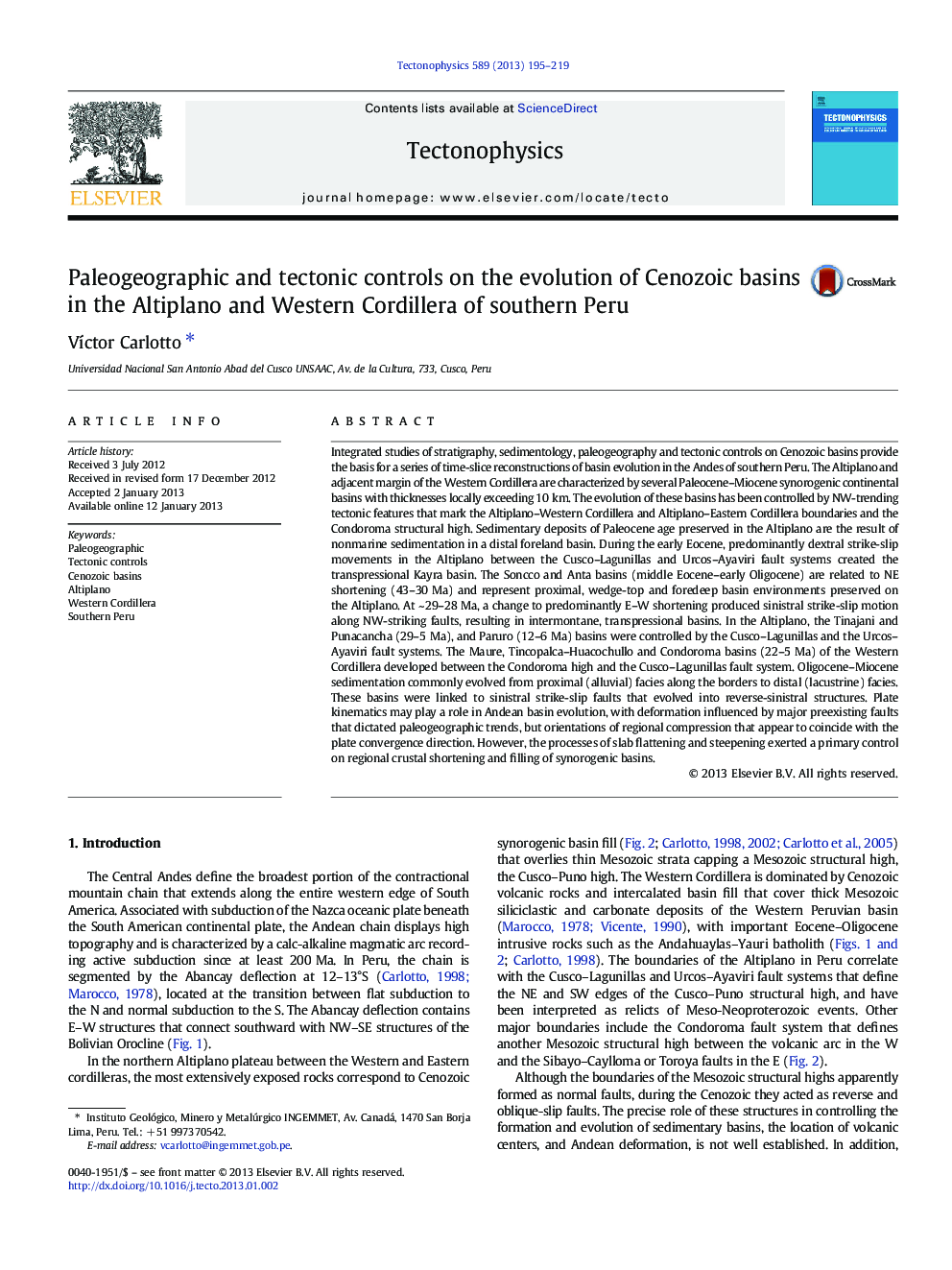| کد مقاله | کد نشریه | سال انتشار | مقاله انگلیسی | نسخه تمام متن |
|---|---|---|---|---|
| 4692493 | 1636796 | 2013 | 25 صفحه PDF | دانلود رایگان |

Integrated studies of stratigraphy, sedimentology, paleogeography and tectonic controls on Cenozoic basins provide the basis for a series of time-slice reconstructions of basin evolution in the Andes of southern Peru. The Altiplano and adjacent margin of the Western Cordillera are characterized by several Paleocene–Miocene synorogenic continental basins with thicknesses locally exceeding 10 km. The evolution of these basins has been controlled by NW-trending tectonic features that mark the Altiplano–Western Cordillera and Altiplano–Eastern Cordillera boundaries and the Condoroma structural high. Sedimentary deposits of Paleocene age preserved in the Altiplano are the result of nonmarine sedimentation in a distal foreland basin. During the early Eocene, predominantly dextral strike-slip movements in the Altiplano between the Cusco–Lagunillas and Urcos–Ayaviri fault systems created the transpressional Kayra basin. The Soncco and Anta basins (middle Eocene–early Oligocene) are related to NE shortening (43–30 Ma) and represent proximal, wedge-top and foredeep basin environments preserved on the Altiplano. At ~ 29–28 Ma, a change to predominantly E–W shortening produced sinistral strike-slip motion along NW-striking faults, resulting in intermontane, transpressional basins. In the Altiplano, the Tinajani and Punacancha (29–5 Ma), and Paruro (12–6 Ma) basins were controlled by the Cusco–Lagunillas and the Urcos–Ayaviri fault systems. The Maure, Tincopalca–Huacochullo and Condoroma basins (22–5 Ma) of the Western Cordillera developed between the Condoroma high and the Cusco–Lagunillas fault system. Oligocene–Miocene sedimentation commonly evolved from proximal (alluvial) facies along the borders to distal (lacustrine) facies. These basins were linked to sinistral strike-slip faults that evolved into reverse-sinistral structures. Plate kinematics may play a role in Andean basin evolution, with deformation influenced by major preexisting faults that dictated paleogeographic trends, but orientations of regional compression that appear to coincide with the plate convergence direction. However, the processes of slab flattening and steepening exerted a primary control on regional crustal shortening and filling of synorogenic basins.
► Studies of Cenozoic basins in S Peru provide reconstructions of Andean evolution.
► Basin evolution has been controlled by NW-trending geotectonic features.
► The Paleocene–Eocene foreland basin evolved to Oligocene–Miocene intermontane basins.
► Intermontane basins were linked to sinistral strike-slip faults.
► Plate kinematics plays a role in Andean basin evolution.
Journal: Tectonophysics - Volume 589, 18 March 2013, Pages 195–219